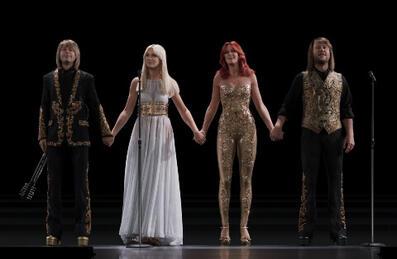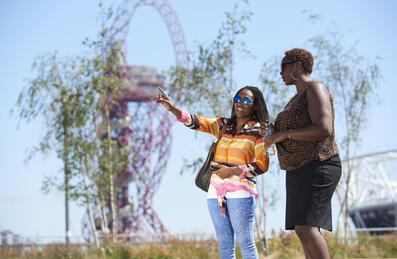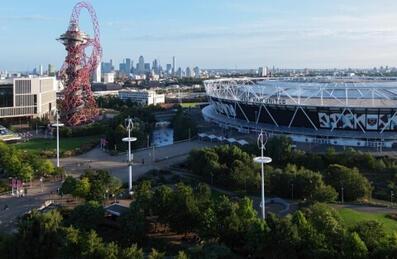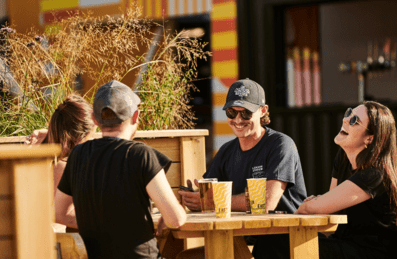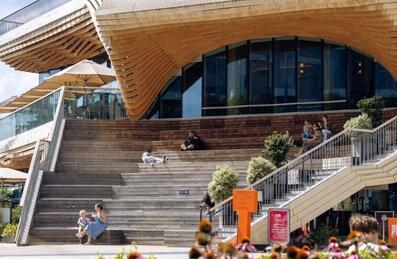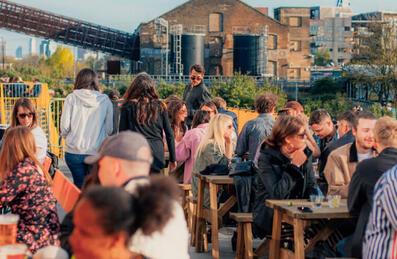
Popular Searches:
Keep up to date
Sign up today for exclusive offers and incredible experiences you won’t want to miss at Queen Elizabeth Olympic Park.
Sign up nowValue of the Park
Value of the Park
Story 09/06/2021
Written by Ruth Holmes, Design Principal at LLDC
For corporate bodies, it is easy to know the price of something but harder sometimes to realise its true value.
But after the year we’ve just endured, perhaps there needs to be a different calculation: one that not only tallies money in and money out but also places a different worth on the balance sheet.
More than ever before, the value of urban parkland is in the spotlight. Parks like Queen Elizabeth Olympic Park have played a crucial role for the communities surrounding them. As well as offering a source of fresh air and access to nature – vital within urban environments – parks give local people space to exercise and relax and provide a lifeline to support their physical and mental well-being.
Our own research, from surveys conducted during lockdown show that 73% of respondents value the Park during the first lockdown and intended to continue using it. This year’s research showed that 60% of respondents are still visiting parks at least twice a week, using the space for exercise or, more recently, to meet with friends or family in small groups.
Queen Elizabeth Olympic Park, as the latest addition to London’s Great Estates, also provides the chance to help London’s economic recovery with its unique mix of commercial business districts, housing developments and world-class sporting venues set within wonderful parkland.
All this highlights the vitally important role our policies on managing the Park have on shaping and protecting the area. We are guided by a suite of documents: Park Management Plan, Biodiversity Action Plan, Natural Capital Account and the Park Design Guide. Combined, these policies allow the Park to thrive, whether that is through enhancing our flora and fauna or attracting the highest quality, sustainable developments to the area.
Completing that suite of policy documents is a new addition Managing Change: Understanding landscape value.
This new addition starts a conversation about the value of the Park so that we can identify and agree which areas are special and significant and how best to protect them in the long-term.
Value takes many forms and we have tried to recognise that in our assessments. Using methodology well respected in the Heritage sector, we have reviewed the Park’s socio-economic worth, its historic and aesthetic value, the ecological and natural capital values as well as the more traditional uplift to land values brought by those key developments on the Park like Here East, IQL and East Bank.
We have consulted with those who live, work and use the Park on a daily basis such as the Park Panel and our volunteer Park Champions as well as staff and contractors.
Part of that suite of policy documents is the Natural Capital Account which attempts to estimate a value of the Park’s assets which don’t make it onto a traditional balance sheet - not just the development value of the land but its worth in terms of health, environment and impact on surrounding areas balanced against the cost of maintaining the Park.
The process has thrown up some surprising findings.
When the calculations are done, many might be forgiven for anticipating a high financial return for the Park’s plants and their ability to remove pollutants from the air we breathe, carbon sequestration and noise mitigation. But these, it turns out, have a relatively low value across the Park in financial terms though not in their importance.
The real value from those 560 acres of parkland and planting come in often less tangible ways.
The parkland alone attracts 1.7 million visitors a year (a further 5 million visit the venues). This equates to a monetary value of £6.7m per year in terms of recreational enjoyment. Around half of these visitors are physically active, resulting in avoided health treatment costs and reducing the wider costs to society of inactivity. This benefit is worth a further £2m per year.
The Park enhances the attractiveness of the area to current and prospective residents and businesses, increasing property value. This premium on property prices in close proximity to the Park is estimated as somewhere between £200m and £400m with a premium on commercial rent of some £360k.
The Natural Capital Account also recognises the costs of managing and maintaining the Park.
The Park’s horticultural and green space management budget is some £2.1 million a year, which funds a team of more than 30 (FTE) staff necessary to ensure the quality and extent of assets are properly maintained.
Continued dialogue helps us to manage change in significant areas and to strike the right balance between development and conservation as the Park evolves over time. That exchange of ideas and views will help ensure that changes enhance rather than detract from what is already here.
Our suite of policy documents not only ensure the quality of the Park’s fabric but that conversations on its future evolution recognise its true worth.

